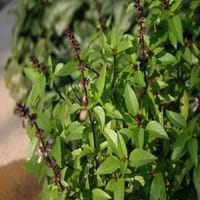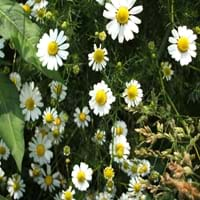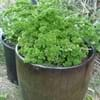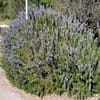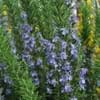Life Span
Annual
Perennial
Origin
Middle Africa, Southern Africa, Southern Asia, Southeastern Asia
Europe, Western Asia, India
Types
Not Available
Not Available
Habitat
gardens, Wet lands
Fields, meadows
USDA Hardiness Zone
9-11
Not Available
AHS Heat Zone
11-1
Not Available
Sunset Zone
A1, A2, A3, H1, H2, 1a, 1b, 2a, 2b, 3a, 3b, 4, 5, 6, 7, 8, 9, 10, 11, 12, 13, 14, 15, 16, 17, 18, 19, 20, 21, 22, 23, 24
1a, 1b, 2a, 2b, 3a, 3b, 4, 5, 6, 7, 8, 9, 10, 11, 12, 13, 14, 15, 16, 17, 18, 19, 20, 21, 22, 23, 24
Habit
Clump-Forming
Upright/Erect
Flower Color
Purple, Light Pink, Lavender
White, Yellow
Flower Color Modifier
Bicolor
Bicolor
Fruit Color
Tan
Not Available
Leaf Color in Spring
Purple, Dark Green, Burgundy, Bronze
Green
Leaf Color in Summer
Purple, Dark Green, Burgundy, Bronze
Green
Leaf Color in Fall
Purple, Dark Green, Burgundy, Bronze
Green
Leaf Color in Winter
Light Green
Light Green
Leaf Shape
Oval
bipinnate
Plant Season
Spring, Summer, Fall, Winter
Summer, Fall
Sunlight
Full Sun
Full Sun
Growth Rate
Very Fast
Fast
Type of Soil
Loam, Sand, Well drained
Loam, Sand
The pH of Soil
Neutral
Acidic, Neutral
Soil Drainage
Well drained
Well drained
Bloom Time
Indeterminate
Early Summer, Summer, Late Summer, Early Fall
Tolerances
Drought
Drought
Where to Plant?
Container, Ground, Pot
Container, Ground, Pot
How to Plant?
Rooted stem cutting, Seedlings, Stem Planting
Runners, Seedlings
Plant Maintenance
Medium
Medium
Watering Requirements
Keep ground moist, Requires regular watering, Water when soil is dry
Allow soil to be completely dry in between waterings, Do Not over Water, Drought Tolerant, Requires regular watering
In Summer
Lots of watering
Lots of watering
In Spring
Moderate
Moderate
In Winter
Average Water
Average Water
Soil pH
Neutral
Acidic, Neutral
Soil Type
Loam, Sand
Loam, Sand
Soil Drainage Capacity
Well drained
Well drained
Sun Exposure
Full Sun
Full Sun
Pruning
Pinch or prune as they grow to promote branching and bushiness
Remove damaged leaves, Remove dead branches, Remove dead leaves
Fertilizers
All-Purpose Liquid Fertilizer
All-Purpose Liquid Fertilizer
Pests and Diseases
Red blotch
Pest Free
Plant Tolerance
Drought
Drought
Flower Petal Number
Single
Single
Fragrant Bark/Stem
Yes
Yes
Foliage Texture
Medium
Fine
Foliage Sheen
Not Available
Matte
Attracts
Not Available
Bees, Beetles, Butterflies, Flies
Allergy
Respiratory problems, Runny nose, Skin rash, Vomiting
Anaphylaxis, Asthma, conjunctivitis, Rhinitis
Aesthetic Uses
Showy Purposes
Not Used For Aesthetic Purpose
Beauty Benefits
Not Available
Not Available
Environmental Uses
Air purification
Air purification
Medicinal Uses
Cough, Cramps, Digestive disorders, Insomnia, Skin Disorders, Vomiting
Antispasmodic, bowel syndrome, Sedative, Stomachic
Part of Plant Used
Leaves
Flowers, Herb
Other Uses
Air freshner, Can be made into a herbal tea, Used As Food, Used as a spice
Can be made into a herbal tea, Used in herbal medicines
Used As Indoor Plant
Insignificant
No
Used As Outdoor Plant
Yes
Yes
Garden Design
Bedding Plant, Container, Edible, Herb / Vegetable, Mixed Border
Cutflower, Herb / Vegetable, Mixed Border
Botanical Name
OCIMUM basilicum var. purpurascens
MATRICARIA recutita
Common Name
Purple Basil
German Chamomile, Scented Mayweed
In Hindi
बैंगनी तुलसी के पौधे
जर्मन कैमोमाइल
In German
Lila Basilikum Pflanze
Echte Kamille
In French
plante de basilic pourpre
Matricaria recutita
In Spanish
planta de albahaca morada
Matricaria recutita
In Greek
Μωβ βασιλικό φυτό
γερμανικό χαμομήλι
In Portuguese
Planta da manjericão roxo
Camomila vulgar
In Polish
Purpurowy bazylia roślin
Rumianek pospolity
In Latin
Ocimum, herba Purple
Matricaria chamomilla
Phylum
Tracheophyta
Anthophyta
Class
Magnoliopsida
Magnoliopsida
Family
Lamiaceae
Asteraceae
Clade
Asterids
Not Available
Tribe
Not Available
Anthemideae
Subfamily
Not Available
Not Available
Number of Species
Not Available
Not Available
Season and Care of Purple Basil and German Chamomile
Season and care of Purple Basil and German Chamomile is important to know. While considering everything about Purple Basil and German Chamomile Care, growing season is an essential factor. Purple Basil season is Spring, Summer, Fall and Winter and German Chamomile season is Spring, Summer, Fall and Winter. The type of soil for Purple Basil is Loam, Sand, Well drained and for German Chamomile is Loam, Sand while the PH of soil for Purple Basil is Neutral and for German Chamomile is Acidic, Neutral.
Purple Basil and German Chamomile Physical Information
Purple Basil and German Chamomile physical information is very important for comparison. Purple Basil height is 60.96 cm and width 30.48 cm whereas German Chamomile height is 20.20 cm and width 25.40 cm. The color specification of Purple Basil and German Chamomile are as follows:
Purple Basil flower color: Purple, Light Pink and Lavender
Purple Basil leaf color: Purple, Dark Green, Burgundy and Bronze
German Chamomile flower color: White and Yellow
- German Chamomile leaf color: Green
Care of Purple Basil and German Chamomile
Care of Purple Basil and German Chamomile include pruning, fertilizers, watering etc. Purple Basil pruning is done Pinch or prune as they grow to promote branching and bushiness and German Chamomile pruning is done Remove damaged leaves, Remove dead branches and Remove dead leaves. In summer Purple Basil needs Lots of watering and in winter, it needs Average Water. Whereas, in summer German Chamomile needs Lots of watering and in winter, it needs Average Water.
